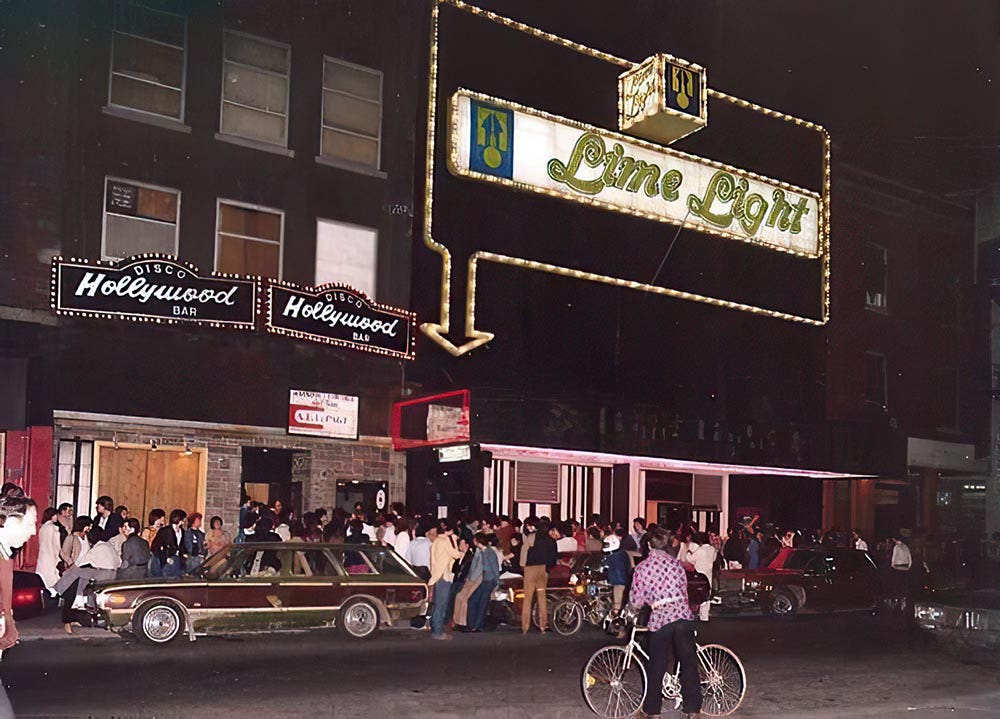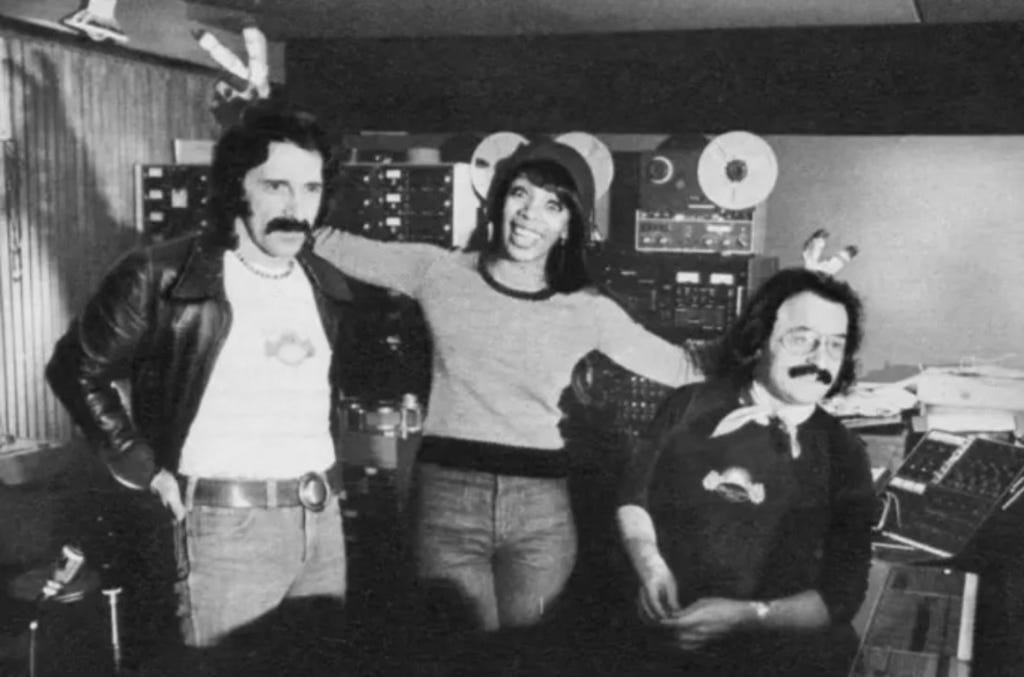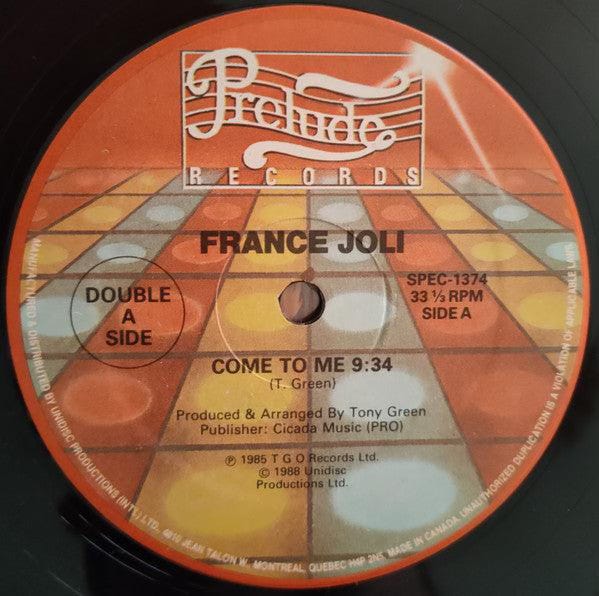Why did Canadian disco queen France Joli not become the "Celine Dion" of her time ?
The Twelve Inch 135 : Come To Me (France Joli)
1979: A Teen Disco Sensation Takes Over
In the summer of 1979, the dance floors across America were ruled by a then 16-year-old France Joli and her hit single “Come To Me.” Joli, with her sweeping vocals and undeniable stage presence, seemed poised for global superstardom. Her song was not just another disco track; it topped the U.S. dance charts and became an anthem in clubs and on the radio. But despite this explosive debut, Joli never became the global sensation she seemed destined to be. What went wrong?
The story of France Joli is both compelling and familiar—a tale of missed opportunities, industry pressures, and the harsh realities that many young female artists faced in a male-dominated music industry.
Montréal: The Dance Music Capital of Canada
While New York is often credited as the epicenter of disco in the U.S., Montréal was its northern counterpart. The city’s dance scene thrived, and its influence could be felt throughout Canada and beyond. Montréal’s iconic Limelight nightclub, along with DJ Robert Ouimet, played a major role in shaping the Canadian disco sound, making the city a key player on the global dance music stage. In 1979, Billboard even dubbed Montréal the "second most important disco market in North America."
The city gave birth to a number of important dance music acts such as Lime, Gino Soccio (read his story in episode 119), and Geraldine Hunt. Among them was France Joli, guided by producer Tony Green, who had an ear for disco's evolving sound as it moved away from its gritty, urban roots and embraced the European-inspired elegance of synthesizers and lush string arrangements. This fusion would shape Joli’s defining track, “Come To Me.”
Robert Ouimet and Pierre Gagnon (PAJ Disco Mix)
Welcome, I’m Pe Dupre and this is “The Twelve Inch”, a newsletter that tells the history of dance music between 1975 and 1995, one twelve inch at a time.
If you’ve received this newsletter, then you either subscribed or someone forwarded it to you. If you fit into the latter and want to subscribe, please do so. That way you will not miss a single episode.
Tony Green: The Man Behind the Magic
Behind every rising star is a mastermind, and for Joli, that was Tony Green. A prolific producer in Montréal’s dance scene, Green didn’t just produce her breakout hit—he also developed her as an artist. Green was crucial in defining the sound of “Come to Me,” a nine-minute+ opus filled with lush orchestration, sweeping vocals, and a bassline that pulsed with disco’s infectious rhythm.
Tony Green (left), France Joli (centre)
But while Green helped shape Joli’s early career, he also limited it. As the 1980s dawned and the music industry evolved, Green’s style didn’t keep pace with the rapid shifts in popular music. Joli, still young and heavily molded by Green’s vision, found herself trapped in a disco bubble as the genre quickly fell out of favor.
Fun Fact 1 : When she toured Canada to promote “Come To Me” in 1979, Bryan Adams opened for her in Vancouver with his disco single “Let me Take You Dancing”. (Read the story of that song in episode 112)
The Rise and Fall of France Joli
France Joli’s path to stardom began at a young age. Born in 1963 in Montréal, she was a child performer, singing and dancing her way through local television and talent shows by the time she was 11. At 13, Joli approached Tony Green, offering herself as a vocalist. Initially unimpressed, Green eventually gave her a shot, and it wasn’t long before he wrote “Come to Me” specifically for her.
Initially, the single struggled to gain attention, but a defining moment came when Joli filled in for Donna Summer at the legendary Beach ’79 party on Fire Island. Performing before 5,000 people, Joli captivated the crowd, and just two months later, “Come To Me” shot to the top of the U.S. dance charts and reached n° 15 on the Hot 100.
However, after her debut album, things took a downturn. Her second album, also produced by Green, did not fare as well. As disco faded and music trends shifted toward pop and R&B, Joli’s sound struggled to evolve with the times.
France Joli todayThe Changing Tides of the Music Industry
So, why didn’t France Joli achieve lasting fame?
Timing played a significant role. By September 1979, the “Disco Sucks” backlash had begun in the U.S., and mainstream audiences started distancing themselves from the genre. Joli, whose music was synonymous with disco, struggled to adapt. Her subsequent albums, while competent, failed to capture the public’s imagination in the same way her debut had.
Her decision to leave Prelude Records for Epic Records also marked a pivotal moment. Why did she leave a label that had been so instrumental to her early success? By the early '80s, Prelude Records, while still influential in the dance music world, was starting to lose its dominance. While Prelude had nurtured her rise, Epic was more focused on positioning Joli as a pop star in the mold of Madonna, a move that didn’t align with Joli’s artistic instincts. Joli herself acknowledged that the material she was given felt disconnected from her roots: “I remember when they were recording it, I was like, ‘What the hell is this?’ It was so techno, not at all what I was used to.”
Fun Fact 2 : After releasing her final album with Epic Records, France Joli shifted her focus to live performances for the next decade. It wasn't until 1996 that she returned to the studio to record a new track, "Touch," once again collaborating with Tony Green. However, the song didn’t reach the same level of success as their iconic hit, "Come To Me."
A Misguided Reinvention
In 1983, France Joli worked with Pete Bellotte and Giorgio Moroder—legends of the disco world—on her album Attitude.On paper, this collaboration should have been a surefire success, but the results were mixed. Both Bellotte and Moroder were known for their work in disco, but by 1983, the music landscape had shifted to image-driven pop, and the sound of the album felt out of step. To make matters worse, Epic records and her management also wanted to position her as their answer to Madonna and that didn’t sit well with Joli.
Peter Bellotte (left, Donna Summer and Giorgio Moroder (right). True men sport mustaches 😃
The pressures of the industry began to take a toll on Joli, both physically and emotionally. France Joli : Yes, I have an eating disorder that’s under control right now. It began when I was 12 when people in the business told me I had to be 10 pounds underweight because of the cameras and television. I was bulimic and anorexic when I was younger. That nearly destroyed me. Today I’m 70 pounds overweight. It’s harder to lose the weight when you’re older. But I’m done being overwhelmed by this. I eat better today and take it day by day. She’s also a recovering gambling addict and explained her addiction as a way to get away from the domination “I was in my bubble and I was just doing me”. It almost led to suicide before she sought help.
Fun Fact 3 : Tony Green had a brief but impactful run as a prominent producer, especially in 1979. In addition to his work with France Joli, he produced Freddie James’ debut hit “Get Up and Boogie,” which became a global Top 10 sensation, and he also formed the Hi-NRG group U.N. alongside Goldie Alexander. This week's mix kicks off with these three standout Tony Green productions.
Conclusion: France Joli’s Story Is One We Should Remember
Despite the challenges she faced, France Joli’s place in the history of dance music is undeniable. “Come To Me” is a landmark track, a quintessential example of late-’70s disco that has remained a favorite on dance floors for decades, especially within the LGBTQ+ community. The song is also considered one of the tracks that helped define the burgeoning Hi-NRG genre, a direct evolution of the disco sound.
France Joli's personal story is a poignant one, though unfortunately not uncommon. It’s a tale of immense talent overshadowed by the complexities of a rapidly changing music industry—an industry that often left artists, particularly women, with little control over their careers. Joli faced many challenges and came close to being broken by the harsh realities of the business.
As I researched for this week's episode and delved into interviews, I gained a deeper appreciation for the artist and the person behind the music. France Joli stands out as one of the most genuine and kind-hearted artists I’ve encountered. Her unwavering optimism, despite everything she’s been through, is truly inspiring. It’s remarkable that she didn’t become bitter, even though her career didn’t reach the heights of a superstar like Celine Dion. To me, she remains a great artist. “Come To Me” has always been a favorite of mine, but now I treasure it even more.
What are your memories of “Come to Me”?
Did you know the song or danced to it in the summer of ’79? How do you think Joli’s career would have unfolded if disco hadn’t collapsed so suddenly? I’d love to hear your thoughts—drop your comments below!
Fun Fact 4 : Montréal was home to two influential disco producers: Tony Green and Denis Lepage. While Green made his mark with artists like France Joli, Lepage was the mastermind behind the disco group Kat Mandu, who had a massive club hit in 1979 with “The Break.” His biggest success, however, came in the early '80s with the studio act Lime, which he co-produced with his wife, Denyse. They worked together on “Come To Me”. Lepage was responsible for the arrangements.
Further reading (or should I say watching)
There are a number of interesting video’s/links :
So You Wanna Hear More ?
I thought you would !
It’s fun to write about music but let’s be honest. Music is made to listen to.
Every week, together with this newsletter, I release a 1 hour beatmix on Mixcloud and Soundcloud. I start with the discussed twelve inch and follow up with 10/15 songs from the same timeframe/genre. The ideal soundtrack for…. Well whatever you like to do when you listen to dance music.
So what’s in this week’s mix ?
Hi-Nrg disco with the three main Tony Green productions to open this weeks mix: “Come To Me” followed by “Hot Lover” by Tony Green’s own band U.N. and the Freddie James classic “Get Up And Boogie”.
I’ve included one of the Hi-Nrg classics of the recently deceased Cissy Houston. Also included is Tom Moulton’s with the fantastic “Put Yourself in My Place”.
The mix would not be complete with some peculiarities of the era. The disco innuendo for instance with Slick and “Sexy Cream” (hmmm what might they be talking about, I wonder ? 😁) and one of the examples of the late seventies lure of using French (very chique), even when you don’t speak, let alone understand, the language: Tasha Thomas’ “Midnight Rendez-vous”
Enjoy !
Next week, we head to Denmark and a Danish duo, responsible for one of the biggest club hits of 1983 with an anti drug song that some believed wasn’t that anti-drug at all.














I remember when this song first came out. Everyone thought she was a talented but young Donna Summer wanna be. However the song was really catchy and well produced. It's too bad she couldn't have gone further with her music career.
A timely meditation on the casual cruelties of the music industry, especially given the recent tragic death of One Direction's Liam Payne. France Joli was unknown here in Britain outside of the underground LGBTQ scene, as was Canadian disco as a whole. However, I'm sure Lime were one of the acts Pete Waterman had in mind when he referred to the "cheap and nasty" Boystown tracks that inspried him to form PWL (boasting, in typical Waterman fashion, that he could do much better) and the Pet Shop Boys were certainly listening. Prelude were much more widely influential here and Eric Matthew's electronic production work with Sharon Redd was certainly an eye opener for me. Incidentally, my favourite track from the era after Moroder had made the transition from disco to 80s pop is New York New York from Nina Hagen's 1983 album Fearless.